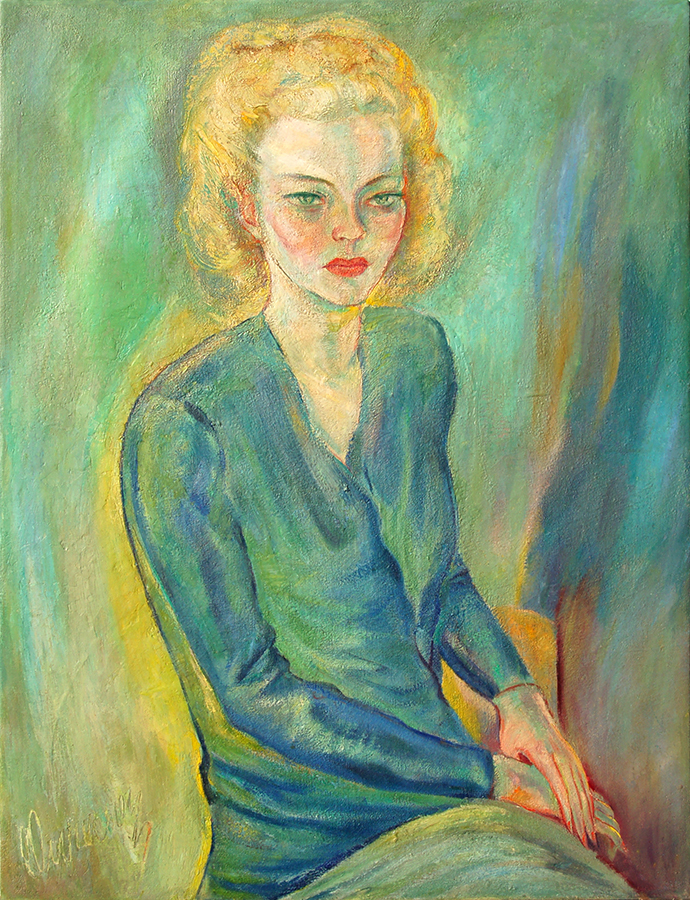 Carlos Enríquez Carlos Enríquez
Period: The Vanguard
1900 - 1957
Portrait of Fernande Lescot
Retrato de Fernande Lescot, 1945
oil on canvas
32 x 24 inches
Carlos Enríquez was born in Zulueta, Cuba in 1900.
His formal artistic training was scant, yet he had a college education and was an avid reader. In 1918-19 he took painting classes while in high school at the Escolapios School in Guanabacoa and in 1924, after graduating from Business School in Philadelphia, he briefly attended the Pennsylvania Academy of Fine Arts.
Enriquez lived in New York, Paris and Madrid before he returned to Cuba in 1934 and, like the other vanguard artists, the reencounter with his native land provided the catalyst for his mature style and his commitment to express Cuban realities and myths. Using a personal visual language of fluid lines, overlapping color forms, and dynamic figure compositions, he represented the Cuban countryside, its inhabitants, and folklore. Poor peasants, heroic legendary and historical figures, sensual women, restless horses, and windy landscapes of palm trees and rolling hills are the main characters and setting for "creole ballads" of confrontation, eroticism, and conflict. In the 1940s, Enriquez's style moved toward expressionism as his palette became brighter, his brush strokes visible, and his distortion of forms more prominent. Enríquez died in Havana, Cuba, in 1957.
|
